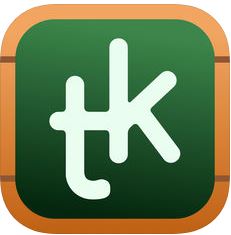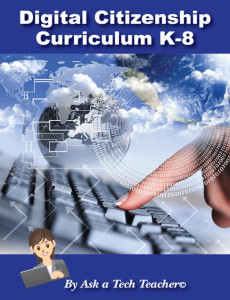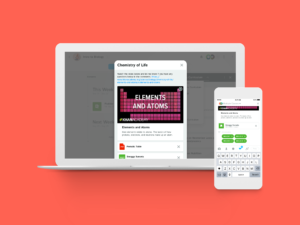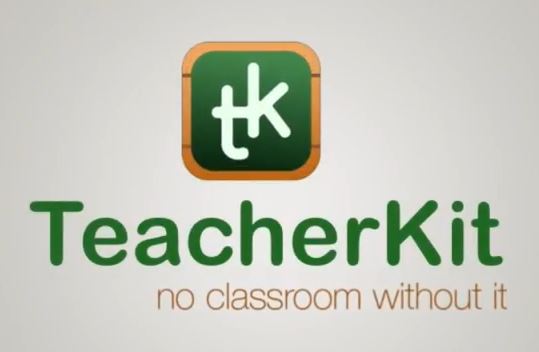Category: Reviews
Book Review: Repositioning Educational Leadership
 Repositioning Educational Leadership
Repositioning Educational Leadership
by James Lytle et al
4/5
The idea of using inquiry to drive change is both inspired common sense and not entirely obvious. That’s why when I heard about Repositioning Educational Leadership: Practitioners Leading from an Inquiry Stance (Teachers College Press 2018), I was thrilled to read it. Teachers are familiar with the inquiry classroom but it doesn’t always filter up to administrators.
“…educational leadership for k12 schools is increasingly complicated, as demands on educational leaders and schools continue to escalate.”
“Leaders need opportunities to learn from the ‘inside’ of other leaders’ experiences, doubts, and all. This volume addresses that need.”
The authors, James Lytle, Susan Lytle, and Michael Johanek, collected evidence from school leadership who used inquiry to solve recalcitrant problems in their schools. The result is this book with a simple rationale: Education leaders must position themselves as inquirers. They must lead from an inquiry stance.
The book is organized into three sections: Learning from and with Students, Collaborating with Teachers and the School Community, and Leading System-level Inquiry. Each chapter within the theme is written by a school leader and shares their story of how leading with inquiry solved a problem they faced. These range from struggling to serve diverse groups of students to addressing where the usual education practices were failing. I found all of them interesting and instructive, each resonating with some aspect of my own experience. In all of these, solutions included the application of inquiry–talking to students, to faculty, to groups, to parents. And listening.
Share this:
Differentiation Simplified with Study.com
 Study.com is an online distance learning portal that provides over 70,000 lessons in fifteen subjects (including algebra, calculus, chemistry, macro- and microeconomics, and physics) aligned with many popular textbooks. Resources include not only videos but study tools, guides, and more. You can read more detail on my Study.com review here.
Study.com is an online distance learning portal that provides over 70,000 lessons in fifteen subjects (including algebra, calculus, chemistry, macro- and microeconomics, and physics) aligned with many popular textbooks. Resources include not only videos but study tools, guides, and more. You can read more detail on my Study.com review here.
Today, I want to talk about Study.com’s emphasis on differentiated instruction.
When I first discovered Study.com, I was blown away by its unique approach to providing passionate learners with a college education that fit their lifestyle. If you are that person who struggles with traditional campus-based classes, has a full-time demanding job, can’t get to a campus because of transportation issues, lives on a tight budget but still values high-quality education, AND you are committed to earning a college degree, do yourself a favor and visit Study.com’s website. I’ve worked with Study.com in the past and come to realize the high value they place on differentiating instruction and meeting students where they are ready to learn, so when they wanted to share the news of their online class teaching the basics of differentiating in the classroom, they knew I would want to help.
To me and many other educators:
Differentiated instruction is at the core of effective teaching.
What is differentiation?
Differentiated learning can be defined this way:
With differentiated instruction, teachers proactively create options to accommodate a diverse range of learners while keeping the whole class on track. Teachers observe students carefully in order to design experiences that match the learning styles of the class and the differing levels of ability and understanding. —Study.com
You might call it ‘personalized learning’ or even ‘blended learning’ but at its most basic, differentiated learning is teaching in ways that best serve individual students–providing different resources and lesson plans to suit different learning styles. If for you, the term ‘differentiation’ should always be followed with, “Where am I supposed to find the time?“, it’s because too often, differentiation is conflated with the tedium of creating individual lesson plans for each and every student. Me, I’ve never done that. Instead, I offer a variety of media that address the lesson. Students do the work of picking what is best for them and selecting the assessment medium best suited to their communication style be it audio, video, text, visual, music, art, or another.
Key principles of differentiation
Share this:
Great News: JotForm now offers a PDF Editor
![]() Forms are popular in schools for all sorts of reasons. Some teachers look no further than Google Forms but for those who require greater simplicity and sophistication in a form builder, as well as agility and rigor, free JotForm (premium edition also available) is an excellent option. It works on PCs, Macs, and mobile devices and offers what seems like an endless supply of professional-looking templates for tasks like performance evaluations, permission slips, volunteer sign-ups, feedback on events, asking for donations, collecting payments, providing contact information, and more. Its drag-and-drop interface makes building forms intuitive, quick, and easy. And the completed form can be pushed out via link, embed, or email. Here’s my review if you’re looking for more details.
Forms are popular in schools for all sorts of reasons. Some teachers look no further than Google Forms but for those who require greater simplicity and sophistication in a form builder, as well as agility and rigor, free JotForm (premium edition also available) is an excellent option. It works on PCs, Macs, and mobile devices and offers what seems like an endless supply of professional-looking templates for tasks like performance evaluations, permission slips, volunteer sign-ups, feedback on events, asking for donations, collecting payments, providing contact information, and more. Its drag-and-drop interface makes building forms intuitive, quick, and easy. And the completed form can be pushed out via link, embed, or email. Here’s my review if you’re looking for more details.
If you already use JotForm, here’s some great news: JotForm has kicked it up a notch by offering a free PDF editor.
Why a PDF Editor?
Every teacher I know must edit a PDF at some time in the school year. Maybe they want to customize an existing PDF for use in their class, or a form they created requires that sort of versatility. PDF Readers are common (like Adobe Reader) but editing one is trickier. If President Trump’s campaign chairman Paul Manafort had one, it would have changed his life dramatically (click the link to read more of this story–and thanks to the JotForm folks for pointing this out to me). Many school documents are shared in PDF format for ease of use on multiple platforms as well as security from being hacked or edited. The biggest reason by far why my colleagues require a PDF editor is that too often, the underlying document is lost and the teacher has nothing left but the PDF.
That’s when a PDF editor becomes critical. Click here for JotForms’ Complete Guide to Editing PDFs.
Share this:
TeacherKit Saves You Time by Managing Class Tasks
 TeacherKit, a useful classroom management app for iOS or Android, provides teachers with one location to log student attendance, take note of student behavior, record grades, create student-level reporting, and other tedious tasks that traditionally take time away from teaching. The intuitive interface allows all this to be done with quick taps and swipes, generating data visualizations on the fly, both for whole classes and individual students. The student-profile system allows teachers to quickly contact students and parents via email, and the premium version adds the ability to send detailed progress reports, complete with behavior and attendance breakdowns. Plus, teachers can send announcements to an entire class, letting them know a date change, assignment due dates, and/or to update class information.
TeacherKit, a useful classroom management app for iOS or Android, provides teachers with one location to log student attendance, take note of student behavior, record grades, create student-level reporting, and other tedious tasks that traditionally take time away from teaching. The intuitive interface allows all this to be done with quick taps and swipes, generating data visualizations on the fly, both for whole classes and individual students. The student-profile system allows teachers to quickly contact students and parents via email, and the premium version adds the ability to send detailed progress reports, complete with behavior and attendance breakdowns. Plus, teachers can send announcements to an entire class, letting them know a date change, assignment due dates, and/or to update class information.
TeacherKit is a global Microsoft and Tradeline Strategic Education Partner with over 1 million teacher users around the world.
How it works
TeacherKit is easy to initiate and intuitive to use. Simply download the app from iTunes or Google Play and build classes. Students can be added via your class list, from other classes, or by photo. Once the class is set up, you can generate reports that summarize grades, behaviors, and more by class or student. Reports can be shared (as a PDF) via email or print. Optional reports include an overall class report, student performance, student/class grades, a class seating chart, and attendance. Here are samples of several:
Share this:
The Case for Positive Reinforcement in Classrooms
Every teacher knows that students do better with positive reinforcement. As tempting as “punishment” might sound when referring to that student who has scrambled your last nerve, to explain consequences of actions in positive terms goes much further toward student success not only in school but in the ongoing effort to build life-long learners.
“Positive reinforcement, whether it be with your family, when following laws, or with students, can best be defined as the logical consequences of doing what’s right.” –Jacqui Murray
As an education pedagogy, pursuing a classroom management system that revolves around positive reinforcement is called Positive Behavioral Interventions and Support, or PBIS. The importance of using tools that prevent disruptive behavior and support students is explained by NEA Past President Lily Eskelsen Garcia:
The most effective tool teachers have to handle problem behavior is to prevent it from occurring in the first place. Positive Behavioral Interventions and Supports (PBIS) programs help teachers recognize the significance of classroom management and preventive school discipline to maximize student success. PBIS strategies are critical to providing all young people with the best learning environment.
Committed teachers can accomplish this in a variety of ways including supportive words, prizes, special activities, certificates, badges, and modeling proper behavior. Here are four online options that support the goal of recognizing students in a positive way:
Share this:
Tech Ed Resources for your Class–Digital Citizenship
 I get a lot of questions from readers about what tech ed resources I use in my classroom so I’m going to take a few days this summer to review them with you. Some are edited and/or written by members of the Ask a Tech Teacher crew. Others, by tech teachers who work with the same publisher I do. All of them, I’ve found well-suited to the task of scaling and differentiating tech skills for age groups, scaffolding learning year-to-year, taking into account the perspectives and norms of all stakeholders, with appropriate metrics to know learning is organic and granular.
I get a lot of questions from readers about what tech ed resources I use in my classroom so I’m going to take a few days this summer to review them with you. Some are edited and/or written by members of the Ask a Tech Teacher crew. Others, by tech teachers who work with the same publisher I do. All of them, I’ve found well-suited to the task of scaling and differentiating tech skills for age groups, scaffolding learning year-to-year, taking into account the perspectives and norms of all stakeholders, with appropriate metrics to know learning is organic and granular.
Today: K-8 Digital Citizenship Curriculum
Overview
K-8 Digital Citizenship Curriculum–9 grade levels. 17 topics. 46 lessons. 46 projects. A year-long digital citizenship curriculum that covers everything you need to discuss on internet safety and efficiency, delivered in the time you have in the classroom.
Digital Citizenship–probably one of the most important topics students will learn between kindergarten and 8th and too often, teachers are thrown into it without a roadmap. This book is your guide to what children must know at what age to thrive in the community called the internet. It blends all pieces into a cohesive, effective student-directed cyber-learning experience that accomplishes ISTE’s general goals to:
- Advocate and practice safe, legal, and responsible use of information and technology
- Exhibit a positive attitude toward using technology that supports collaboration, learning, and productivity
- Demonstrate personal responsibility for lifelong learning
- Exhibit leadership for digital citizenship
Share this:
Today’s Meet is Closed. What are your Alternatives?
 As of June 16, 2018, Today’s Meet closed (read the full details here). That iconic backchannel chat platform for classroom teachers and learners, the one that for ten years was the first name thought of when discussing feedback and collaboration, one that quickly became a staple in classrooms and conferences. I went to my PLN for thoughts on what they’ll use in its stead. It turns out, there are good options, depending upon whether you primarily use Today’s Meet for:
As of June 16, 2018, Today’s Meet closed (read the full details here). That iconic backchannel chat platform for classroom teachers and learners, the one that for ten years was the first name thought of when discussing feedback and collaboration, one that quickly became a staple in classrooms and conferences. I went to my PLN for thoughts on what they’ll use in its stead. It turns out, there are good options, depending upon whether you primarily use Today’s Meet for:
- backchannel and student response
- polls, forms, or surveys
- warm-up and exit tickets
Here are webtool replacements you can use for summer or fall classes:
Backchannel and Student Response
A backchannel is a way for students to chat about lesson material while it’s being taught. It occurs in realtime but is non-intrusive to classwork. The teacher can throw a question out to students and evaluate learning or needs based on answers. Or students can pose a question and get answers from classmates. Here are three options you will like:
Share this:
Kiddom Helps Administrators Manage Change
 Kiddom is an easy-to-use learning management system alternative that provides educators with an effective alternative to Google Classroom. Its pages are visual and easy-to-understand, enabling teachers to quickly create lesson plans, find targeted resources, and determine how students are doing. Click here for my full review.
Kiddom is an easy-to-use learning management system alternative that provides educators with an effective alternative to Google Classroom. Its pages are visual and easy-to-understand, enabling teachers to quickly create lesson plans, find targeted resources, and determine how students are doing. Click here for my full review.
What Kiddom does that few other education webtools do is provide free educator and administrator guides on topics such as Standards-based Grading, Blended Learning, and lesson planning (click for my reviews of these). Their newest is the twenty-eight-page ISTE-aligned Change Management eBook. It addresses how to create a sense of urgency, build a coalition, form and communicate your strategic vision, enable action by removing barriers and instituting change, generate short-term wins, and more.
Eric Sheniger, a Senior Fellow at the International Center for Leadership in Education, argues that when considering changes, especially in the realm of education technology, administrators should begin by naming the reasons behind our decision before doing anything else. Start by considering: What is your vision for how technology will be utilized to improve students’ learning outcomes?
In the oft-daunting world of tech-infused education, this guide provides effective strategies to lead the way from wherever you are, be it paper-and-pencil or tech comfort, to where you need to be.
Share this:
Gamechanger: Type to Learn is Now in the Cloud!
 When I started teaching a decade ago, Type to Learn was the MS Word of typing programs–everyone used it. The game-based keyboarding program was fun, engaging, and actually worked. Students graduated from the thirty-forty lessons (that took about a year to get through) with the skills they needed to become fast and accurate typists who could use the keyboard as an effective tool in both classwork and homework.
When I started teaching a decade ago, Type to Learn was the MS Word of typing programs–everyone used it. The game-based keyboarding program was fun, engaging, and actually worked. Students graduated from the thirty-forty lessons (that took about a year to get through) with the skills they needed to become fast and accurate typists who could use the keyboard as an effective tool in both classwork and homework.
At some point in the past, busy teachers moved away from a committed program that teaches typing to solutions that promised to automate the process with rote drills and games. With most of these freemium online programs, students log in and get started. No installation, no set-up, often little supervision, just typing. The problem is, they don’t work very well. With the push to move assessments online, students need good keyboarding skills. That means:
…fast accurate typing as a tool for writing and test-taking, not a distraction
If you’re one of the many who realize your students’ typing skills aren’t up to this standard, you’ll love Type to Learn’s game-changing update: It’s now in the cloud. No more software downloads. No more inability to sync between home and school. No more “runs only on desktops and laptops”.
Let me back up and describe Type to Learn Cloud. It’s a comprehensive typing program that teaches not just the basics but advanced skills necessary to become fast and accurate touch typists. It does this through a process of review, demonstration, practice, and assessment. Using avatar-like animation, engaging sounds, and colorful graphics, rolled out in a space-themed story, students progress through thirty-six lessons, five games per lesson, and seven assessments to complete the interactive missions that will save their world. It operates in the cloud, works on most digital devices (including Chromebooks and iPads with an external keyboard), and plays well with all browsers. Students can work from home or school and their progress syncs between the two.
Share this:
Kiddom’s Content Library Makes Differentiation Faster Than Ever
 A stand-out webtool among standards-based grading platforms is a free online program called Kiddom (click for my review). Kiddom is designed to help teachers curate individual learning experiences with pages that are visual and easy-to-understand, and enable teachers to quickly determine student progress and where remediation is needed.
A stand-out webtool among standards-based grading platforms is a free online program called Kiddom (click for my review). Kiddom is designed to help teachers curate individual learning experiences with pages that are visual and easy-to-understand, and enable teachers to quickly determine student progress and where remediation is needed.
While it offers many appealing pieces (homework assignment and grading, easy communication, and built-in metrics), one unique to Kiddom is their robust K-12 content library. Designed to offer lessons, videos, lectures, quizzes, and more that differentiate for individual students, its real power is making the resources of the most respected names in edtech available with one click. This includes:
- ABCYa.com
- CK-12
- Desmos
- Everfi
- Flocabulary
- IXL Learning
- Khan Academy
- Learn Zillion
- Newsela
- PBS Learning Media
- Quill.org
- Rocket Lit
The library is searchable by topic with preview features for selections.



































